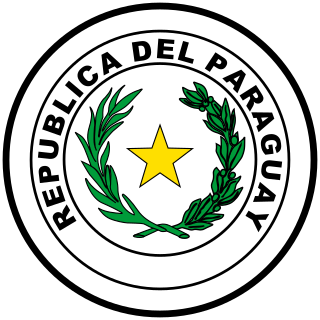Related Research Articles
The Greens of Andorra is a green political party in Andorra.
The Liberal Party, commonly known as the Blue Party was a political party in Paraguay, ruling the country for most of the period between 1904 and 1940.

Parliamentary elections were held in Russia on 12 December 1993. They included the last elections to the Federation Council of Russia.
The National Law Party was a political party in Trinidad and Tobago. It contested the 1995 general elections, but received just 0.3% of the national vote and failed to win a seat. The party did not contest any further elections.
The People's Empowerment Party was a political party in Trinidad and Tobago. It contested the 2000 general elections, but received just 0.3% of the vote and failed to win a seat. The party did not contest any further national elections, but did run in elections in Tobago. In the 2001 Tobagan House of Assembly elections it won 7.1% of the vote, but again failed to win a seat.

Constitutional Assembly elections were held in Paraguay on 6 February 1977. The Colorado Party was the only party to contest the elections, and won all seats. Voter turnout was 82.8%. Following the election, the constitution was amended to scrap term limits, allowing President Alfredo Stroessner to contest the 1978 elections.

Presidential elections were held in Colombia on 1 May 1938. Eduardo Santos of the Liberal Party was the only candidate after the Conservative Party decided not to contest the elections, and received 100% of the vote. Voter turnout was only 30.2%. Santos took office on 7 August.

Parliamentary elections were held in Colombia on 4 April 1937 to elect the Chamber of Representatives. The Liberal Party was the only party to contest the elections, and received 100% of the vote.

Parliamentary elections were held in Colombia on 16 March 1958 to elect the Senate and Chamber of Representatives. They were the first elections held under the National Front agreement, which only allowed the Conservative Party and the Liberal Party to contest the elections, and allocated 50% of the seats in both houses to each party. As a result, the main contest at the elections was between factions within each party.

Parliamentary elections were held in Colombia on 20 March 1960 to elect the Chamber of Representatives. Under the National Front agreement, only the Conservative Party and the Liberal Party were able to contest the elections, with 50% of the seats in both houses allocated to each party. As a result, the main contest at the elections was between factions within each party.

Parliamentary elections were held in Colombia on 18 March 1962 to elect the Senate and Chamber of Representatives. Under the National Front agreement, only the Conservative Party and the Liberal Party were allowed to contest the elections, with each party allocated 50% of the seats in both houses. As a result, the main contest at the elections was between factions within each party.

Parliamentary elections were held in Colombia on 15 March 1964 to elect the Chamber of Representatives. Under the National Front agreement, only the Conservative Party and the Liberal Party were able to contest the elections, with 50% of the seats in both houses allocated to each party. As a result, the main contest at the elections was between factions within each party.

Parliamentary elections were held in Colombia on 20 March 1966 to elect the Senate and Chamber of Representatives. Under the National Front agreement, only the Conservative Party and the Liberal Party were allowed to contest the elections, with each party allocated 50% of the seats in both houses. As a result, the main contest at the elections was between factions within each party.

Parliamentary elections were held in Colombia on 17 March 1968 to elect the Chamber of Representatives, the last occasion on which mid-term elections were held for the Chamber. Under the National Front agreement, only the Conservative Party and the Liberal Party were able to contest the elections, with 50% of the seats in both houses allocated to each party. As a result, the main contest at the elections was between factions within each party.
The Economic Group was a political party in Estonia.
The Åland Coalition is a political alliance of the main political parties in the Åland Islands formed to contest the Åland seat in the Parliament of Finland. Its representative usually sits with the Swedish People's Party faction in Parliament.

The Social Democratic Party of Macedonia is a political party in North Macedonia.

The Democratic Party was a political party in Macedonia.

The Labour Party is a minor political party in Moldova led by Gheorghe Sima.

The Agrarian Union Party was a political party in Romania.
References
- ↑ Nohlen, D (2005) Elections in the Americas: A data handbook, Volume II, p431 ISBN 978-0-19-928358-3
- ↑ Nohlen, p428
| This article about a Paraguayan political party is a stub. You can help Wikipedia by expanding it. |